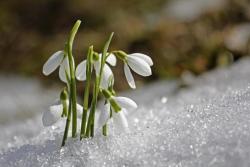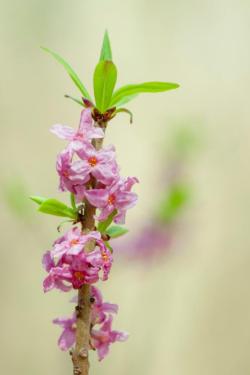 Asset Publisher
Asset Publisher
Polish forests
Poland is in the European lead, while concerning the area of all forests. They cover about 29,2 % of the country territory, and grow within the area of 9,1 million hectares. The overwhelming majority of the forests is state owned, of which almost 7,6 million hectares are managed by the State Forests National Forest Holding..
The number of Polish forest is still growing. The forestation rate of the country has increased from 21 % in 1945 to 29,2 % at the moment. Between 1995 and 2008, the forest area increased by 310 thousand ha. The basis for afforestation works is the "National Programme for Increasing the Forest Cover" (KPZL), assuming an increase of the forestation rate up to 30 % by 2020 and up to 33 % by 2050. Polish forests abound in flora, fauna and fungi. 65 % of the total number of animal species live there.
The forests grow in our country on poor soils, mainly because of the development of the agriculture in previous years. It influences the distribution of the types of the forest sites in Poland. Over 55 % of the forest areas is covered with coniferous forests. In other areas, there are forest sites, mainly the mixed ones. Their small part constitute alder and riparian forests – not more than 3 %.
In the years 1945 – 2011 the area of natural deciduous tree stands within the area of the State Forests National Forest Holding increased from 13 to 28,2 %.
Within the lowlands and uplands the most often occurring tee species is pine. It covers 64,3 % of the forest area of the State Forests National Forest Holding and 57,7 % of private and commune forests. In the mountains the predominant species is European spruce ( in the west) and European spruce with beech (in the east). Domination of pine is the result of carrying on sustainable forest management in the past. Once, the monocultures (crops or cultivations of one species) were the answer to the great demand of industry for wood. Such forests appeared to be quite fragile to climatic factors. They also were often the prey of pests' expansion.
In Polish forests, the share of other tree species, especially deciduous trees have been systematically increasing. The foresters have stepped aside from monocultures – that is why, they try to fit specific species of the forest stand to the natural stand, that would be proper for the given area. Thanks to that, in the years 1945 – 2011, the area of the deciduous tree stands within the lands of the State Forests National Forest Holding increased from 13 to 28,2 %. There occur more and more frequently the following tree species: oaks, ashes, maples, sycamore maples, elms, but also birches, beeches, alders, poplars, hornbeams, aspens, tilias and willows.
Our forests are the most often represented by the forest stands aged 40 to 80 years. The average age of the forest equals 60 years. More and more trees are of big size at the age over 80 years. Since the end of the Second World War, the forests' area has increased up to almost 1,85 million hectares.
Raport o stanie lasów w Polsce 2012
 Asset Publisher
Asset Publisher
 Asset Publisher
Asset Publisher
PRZEDWIOŚNIE
PRZEDWIOŚNIE
„Idzie luty podkuj buty” – brzmi ludowe przysłowie. Na taki śnieżny i mroźny luty jak w tym roku czekaliśmy kilka lat.
Mimo to przyleciały już pierwsze żurawie – to sygnał nadchodzącego przedwiośnia czyli pory roku, kiedy przyroda budzi się do życia, zakwitają pierwsze rośliny, rozpoczynają się powroty ptaków. Dzień jest już wyraźnie dłuższy. Tam, gdzie liściasty, wilgotny las spotkać można leszczynę pospolitą. Na jej gałązkach widać już zwisające żółtozielone kotki – to kwiaty, jedne z pierwszych na przedwiośniu. Nieopodal rośnie wierzba, jedna, druga, a na ich gałązkach zaczynają pękać pąki i jeszcze chwila, a każdy przechodzień będzie podziwiał ich białe bazie.
Las zaprasza nas coraz głębiej, urzeka swym pięknem, zapachem, spokojem. Wśród zarośli bzu czarnego, młodych buków i dębów poprzetykanych starymi sosnami wzrok przykuwają różowe, nabrzmiałe już pąki – to wawrzynek wilczełyko. Niewielki krzew, a jakże urodziwy. Za kilkanaście dni obsypie się różowymi kwiatami. Ale uwaga! Jest to piękna roślina, lecz bardzo trująca i w naszym kraju objęta ochroną częściową. Największym zagrożeniem dla tej rośliny są ludzie, którzy zrywają jej kwitnące pędy w celach dekoracyjnych lub przesadzają ją do ogrodów.
W słoneczne dni słychać już radosne śpiewy ptaków zwiastujących wiosnę. To ptaki, które spędziły u nas zimę. Jednocześnie zaczyna się powrót ptasiej braci z zimowisk i wyścig o to, kto zajmie najlepsze miejsca na gniazda i wychowanie młodych. Które ptaki będą pierwsze, które zawitają do nas jako ostatnie? Obserwujcie pilnie otoczenie, patrzcie w niebo, nasłuchujcie głosów! Ptaki wracają z zimowisk według stałego kalendarza powrotów. Człowiek obserwuje te przyloty już od wieków bo powracające ptaki to zapowiedź wiosny. Skowronek jest jednym z najwcześniej do nas przylatujących ptaków. Przyloty zaczynają się już w połowie lutego. Wczesną wiosną łatwiej nam zauważyć powroty ptaków dużych, zwłaszcza kiedy wracają grupowo. Do najwcześniej przylatujących dużych ptaków należą żurawie. Gdy zima długa i śnieżna można je spotkać na leśnej polanie spacerujące po białym puchu. Szczęśliwiec ujrzy widowisko - taniec godowy pary, którego widok zapiera dech w piersiach. Ptaki krążą wokół siebie z rozpostartymi skrzydłami, wykonują niespodziewane wyskoki i głębokie skłony. To ptaki o iście królewskim wyglądzie! Poruszają się majestatycznie!
Idąc w słoneczny, lutowy dzień leśnym duktem wyostrzmy wzrok, wytężmy słuch, by nie umknęły nam zmiany jakie zachodzą w przyrodzie.
Dagmara Czapiewska-Żółtowłos - rzecznik prasowy Nadleśnictwa Miastko
fot. T. Przybył


 fot. Paweł Fabijański
fot. Paweł Fabijański
 fot. Paweł Fabijański
fot. Paweł Fabijański
 fot. Paweł Fabijański
fot. Paweł Fabijański






 śnieżynka przebiśnieg
śnieżynka przebiśnieg
 wawrzynek wilczełyko
wawrzynek wilczełyko